
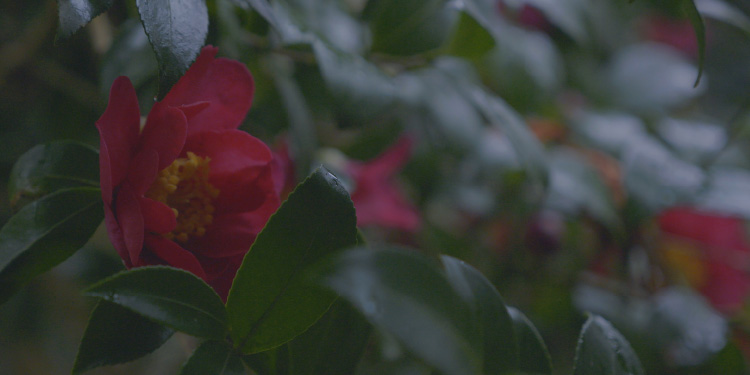
Moments during a trip when you feel the existence of people who have lived in that place rouse your emotions, as if you can see through the present-day scenery down to the layers concealed underneath it. People before you have seen this same scenery on this road or in this place. Even if they are no longer a part of this world, their existence still echoes around us like the afterglow of the setting sun.

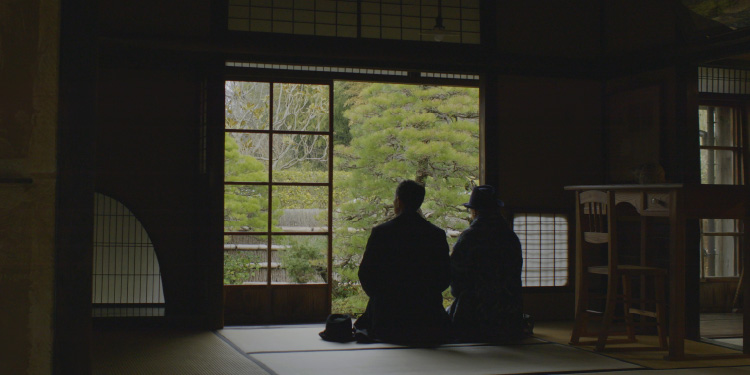
One such place is Matsue City in Shimane Prefecture. This city has an abundance of layers. It played a pivotal role in ancient Japanese history going back to the myth of Susanoo, the storm god and younger brother of the sun goddess Amaterasu. The ancient rulers of Izumo, located in modern-day eastern Shimane Prefecture, yielded power to the Yamato Kingship (a tribal alliance that ruled circa the 4th to the 7th centuries), and then officials were stationed here under the ritsuryo system of governance based on legal codes during the Nara Period (710–784). Izumo later became part of the Matsue domain during the Edo Period (1603–1867). Tea culture was established in this land by Matsudaira Fumai (1751–1818), the seventh lord of the domain. Echoes of this can be seen today in the many Japanese sweets shops that still operate here and the many people who drink matcha tea when relaxing.
Two modern-day influences on the Matsue of today are the Mingei (folk art) Movement and Lafcadio Hearn.
In 1931, Muneyoshi Yanagi gave a lecture that lit the flame of the local Mingei Movement here. Kanjiro Kawai, Shoji Hamada and Bernard Leach also came here to provide instruction and encouragement to handiwork artisans. The ardor of this time has been handed down and kept alive to the present day.
One legacy is the traditional Sodeshi-gama kiln and pottery studio, where we had original ceramic buttons made. We asked to have a slipware pattern decorate the surface of the buttons. This is where pottery is covered with slip, or semiliquid clay, and then has a pattern etched onto it. This traditional technique had been lost in the West, but was revived in England by Leach and Hamada and then transmitted to artisans in Japan. Used on buttons, the rustic warmth of slipware stands out with unconventional beauty.

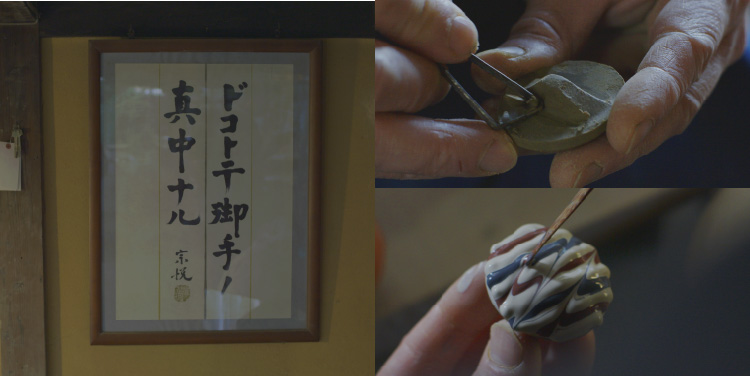
Calligraphy done by Muneyoshi Yanagi adorns the pottery workroom.
Doko to te mite no manaka naru
(“In the palm of Buddha’s hand no matter where you are”)
This phrase could be interpreted to mean that if you do honest work that does not go against nature, you will be in the palm of Buddha’s hand no matter where you are. In other words, the work is not about intentionally creating things of beauty, but that things of beauty naturally flow from the work.

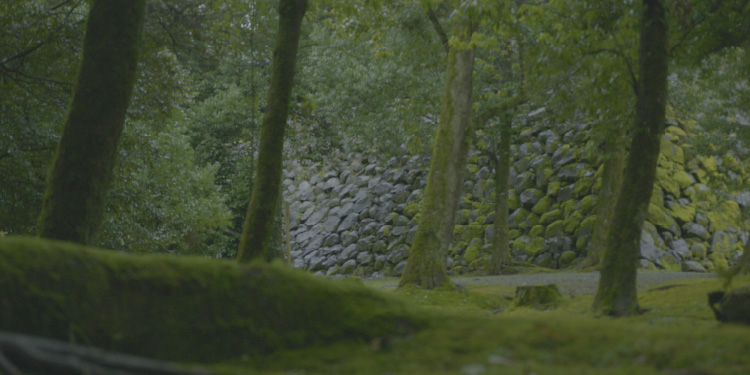
Lafcadio Hearn, later known as Yakumo Koizumi after gaining Japanese citizenship, lived in Matsue in the late Meiji Period (1868–1912) and trained his open mind and unprejudiced eye on the people and culture of Japan. Stroll around the city and you will see his footprints everywhere. He became famous around the world for the book Kwaidan: Stories and Studies of Strange Things filled with Japanese legends and ghost stories, but before this he was also a journalist, English teacher, essayist and literary scholar. Hearn, who had been inspired by the Kojiki (“Records of Ancient Matters,” compiled in 712) to come to Japan, revered Matsue as the domicile of the ancient gods. He loved Matsue deeply and the people of Matsue continue to love him in return. This illustrates the rewarding relationship between people and the land they inhabit.
In his writings, Hearn documented in vivid detail how Japanese people lived at the time. People would stand on Matsue Bridge at sunrise and clap their hands together while offering prayers to the gods. He described the universal sun setting on the vast Lake Shinji. He loved small creatures, plants and the songs of insects and was captivated by the simple, honest piety of common folk and their spiritual outlook on the world. He was a true-born poet. He described his openness to experiencing emotion that allowed him to feel poesy (sources of beauty and poetic inspiration) from all things as follows.

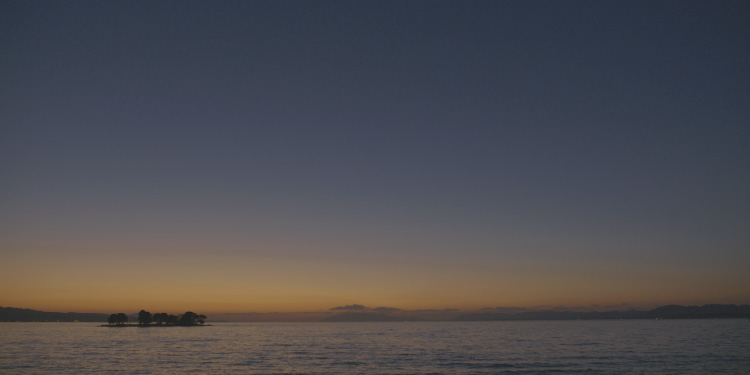
And the emotion itself—what is it? I know not; yet I feel it to be something infinitely more old than I,—something not of only one place or time, but vibrant to all common joy or pain of being, under the universal sun. (from Glimpses of Unfamiliar Japan)
Through the palm of the hand, our journey to the world of sympathetic vibrations continues.
職種:店舗販売 / 営業 / 生産管理 / パタンナー / デザイナー
正社員登用、給与は経験により相談。月20万円以上。
年齢性別不問。
厚生年金、健康保険、雇用保険等完備。交通費支給、賞与。
ご希望の方は、メールにて履歴書と職務経歴書をお送り下さい。
通過者のみ面接の返信をいたします。なお募集の職種は時期によって異なる場合があるのでお問い合わせください。
*学生のインターンは随時可能ですので、希望者は面接いたします。
送信先メールアドレス:matohu@lewsten.com
◇ matohuの理念
「日本の美意識が通底する新しい服の創造」をコンセプトに文化や歴史を大切にしながら、現代人の心に響く魅力ある「デザイン」を生み出すこと。それを深い「言葉」で表現し、共感者の輪を拡げて行く「場」を作って行くこと。
この3つを通して、多様で心豊かな世界をともに作り上げることがmatohuのプロジェクトであり、理念です。
◇ 仕事のやりがいと人間的成長
まかされた仕事を自分の創意で工夫していける環境です。1Fはショップ、2Fはアトリエになっており、デザイナーと直接話しながらアイデアを実現していけます。また文化、歴史など幅広い知識を学ぶ機会も多く大人の教養と礼儀が身につき、人間的にも成長できます。
人の心に彩りを添えるデザインを生活のなかに!を合い言葉にこれから世界に向けて発信するmatohuのスタッフを募集します。